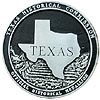| |
|
|
El Barrio Azteca |
|
 |
|
Laredo,
TX,
USA
|
| |
| |
|
Texas State
Historical Marker |
One of the earliest residential neighborhoods in Laredo, this area was first divided into lots in the 1870s and 1880s. Residents worshiped at San Augustin Catholic Church and La Iglesia Presbiteriana Sinai, which was established in 1895. The Mexican revolution that began about 1910 induced many Mexicans to emigrate to the United States. By 1911 La Escuela Amarilla (the Yellow School) and the water well in La Plaza De la Noria were the center of the self-sufficient community. A theatre, the Teatro Nacional, opened in 1922. The Laredo Coffee Company and a bottling works were in operation by 1925. The Teatro Nacional was renamed El Azteca in the 1930s. The neighborhood soon adopted the theater's name. The Iturbide Theater opened in 1935, calling itself the Home of Spanish Vaudeville. At various times El Azteca has boasted bakeries, tortilla factories, food stores, funeral homes, blacksmiths, barber shops, doctors' offices, a boarding house, a boys' orphanage and a private men's school. Area structures have been flat roofed stucco sandstone structures, stylish Victorian cottages, shotgun houses, board-and-batten box houses and brick storefronts. The Juarez-Lincoln Bridge, also known as International Bridge Number Two, was constructed in 1976. Thirteen city blocks of historic housing were destroyed to build the bridge. The U. S. border station was completed in 1982. Azteca Economic Development and Preservation Corporation was founded in 1982 to foster neighborhood revitalization and encourage preservation-based economic development. El Barrio Azteca remains a thriving district. (1999)
This page last updated: 7/15/2008 |
|
|
|
|


